Fly Fishing with Doug Macnair All About Flies Part 1
Fly Fishing with Doug Macnair All About Flies Part 1
By Doug Macnair
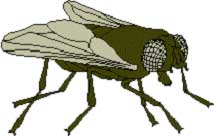 The “Fly,” in fly fishing, is not really a fly at all. In fact, the word “fly” is not necessarily the right word to describe much of anything to do with fly fishing. Perhaps in the beginning - back in the days of tree limbs, string and dead bugs - a “fly” was really a fly. But with the passage of time and growth in technology, the “fly” at the end of the leader is all too frequently something else. Try to think of it this way: the term “fly” generically describes the artificial or imitation bait tied to the end of the fly fisher’s leader. Down South, you may hear the term “bug” if the fly fisher is after black bass; in the northwest, you may hear “streamer,” if the target is steelhead; still other fishers may refer to their imitation using the term “diver” or “eelwørm.” All are technically correct. So in dealing with the term, “fly,” just remember this simple axiom: fly fishing deals with flies, fly rods, fly lines, and fly reels even though the flies, fly rods, fly lines and fly reels are used by Bugger Fishers, Streamer Fishers, Diver Fishers and Eelworm Fishers. The “Fly,” in fly fishing, is not really a fly at all. In fact, the word “fly” is not necessarily the right word to describe much of anything to do with fly fishing. Perhaps in the beginning - back in the days of tree limbs, string and dead bugs - a “fly” was really a fly. But with the passage of time and growth in technology, the “fly” at the end of the leader is all too frequently something else. Try to think of it this way: the term “fly” generically describes the artificial or imitation bait tied to the end of the fly fisher’s leader. Down South, you may hear the term “bug” if the fly fisher is after black bass; in the northwest, you may hear “streamer,” if the target is steelhead; still other fishers may refer to their imitation using the term “diver” or “eelwørm.” All are technically correct. So in dealing with the term, “fly,” just remember this simple axiom: fly fishing deals with flies, fly rods, fly lines, and fly reels even though the flies, fly rods, fly lines and fly reels are used by Bugger Fishers, Streamer Fishers, Diver Fishers and Eelworm Fishers. Most people, I think, hear the term fly fishing and immediately visualize an azure blue sky as the backdrop to an ideal day of gentle breezes and cool air. In the foreground, they see the stream and its cool, pure, clear water rushing on to where … they ponder. In their mind they see with clarity the rocks, riffles, rapids, eddies and the deep pools. They hear the water as it rushes on, the sound of the birds singing, the wind as it passes through the branches of trees. They see the fly line soar gracefully through the air, the rod sharply bend as the fish strikes. They see the fish as it leaps high into the air as it tries to free itself. They know it is a trout! If you see this picture, as I do, we both see things the same way: trout and fly fishing are inseparable. I am sure you have seen the flies of the trout fly fishers. They abound in numbers running into the thousands - if we counted all the flies fly tiers have tied, tried and retied. They are remarkable in their color combinations, some colored as brilliantly as a rainbow; others dull in hues of beige, tans, browns and black; and some that shimmer from the light reflecting from their tinsel trim. Some are without wings; others seem to be capable of flight. Some are weighted; others have loft and seem float to ground if dropped. Yes, these are the flies of the trout fly fisher. To me, fly tying is truly a form of art. When I gaze at a specimen tied by a master, I sometimes wonder how anyone could take this beautiful creation, tie it to a Line and throw it in the water. The truth is some fly fishers become so entranced by the magic of the fly they aspire to become master tiers. They buy equipment, go to fly tying schools, practice for hours, if not years, and generally clutter up their homes. What a mess: little pieces of thread, yarn and feathers, along with an occasional itsey-bitsey hook, find their way to the floor later to hide in rugs, corners and other nooks and crannies. Yes, I tie flies, but not like the flies tied by the masters. The only thing we could possibly have in common is the mess. My flies are big and ugly. My flies are so bad that I deliberately equip them with teeth during the final act of creation. My flies are trained to attack any fish on sight. I have admiration for anyone who masters the art of fly tying. It is a talent and a gift. Perhaps, years ago when I was a young man I might have … But now I am old, my eyes do not see as they once did, my fingers grow clumsy. In truth, the only thing left that I can do is fly fish. That’s why Fly Fishing for the Rest of Us is not about flies or pictures of flies or how to tie flies. No, this book is not about flies. It simply would not be ethical for me to tackle a subject so many others have addressed, and I might add, addressed in boring detail. There are books in print dealing with every facet of flies and fly tying -- dry flies, wet flies, nymphs, midges, fly patterns, flies in general, trout flies, western flies, eastern flies, flies for the Atlantic salmon, bass flies, panfish flies, steelhead flies, flies made of foam, and flies for saltwater. Having now established that there is an endless array of books, magazines, articles, and videotapes dealing with flies and fly tying, my remarks are intended to provide the overview most fly fishers need to understand about what otherwise can be a complex subject. The simple fact is that most flies are designed to replicate a food source found somewhere in the water column between the top and the bottom. When you think of fly fishing a body of water, think of the water as if it were cross-sectioned for you to view from the side, top to bottom. The sport of fly fishing is most frequently a game -- a game in which the fly fisher tries to figure out where in the water column friend fish lurks. To be sure, the fly fisher must be able to fish the entire water column - from the surface to the bottom - if he or she really intends to catch a fish. This is the point: a fly fisher who fishes only a floating line and dry flies is fishing a part of the water where the fish are located only about 10% of the time. They spend the other 90% elsewhere in the water column where the floating line and dry fly cannot go. Believe it or not, many experienced fly fishers have yet to figure out this truth and its implications. Consequently, going fishless is something they frequently experience. Wrong way fly fishing will not let you catch the right fish! Let’s begin the overview with what fish eat and/or attack.  Aquatic Insects. Aquatic Insects. For trout, and others to include panfish and bass, the basic fish food remains the aquatic insect that spends most of its life in, on, or about the water. These tasty little morsels move through a life cycle from birth through various stages such as swimming, crawling, and flying, before finally dying and falling back into the water. This is only meant to be a general overview since I profess no knowledge of entomology. There are simply too many of these little bugs to permit a thoroughly detailed discussion reviewing the specific life cycles of the mayfly, caddisfly, stonefly, and midge that comprise the aquatics. However, I never cease to be amazed how much there is to learn about the subject, even when confined to just one small area of the country. Back in 1995, my friend Steve May teamed up to do The Wright Hatch, a very small book outlining the hatches in and about Vermont’s waters. I’m learning fast. With the little book in hand, matching the hatch becomes fairly simple, without it you will need the company of a “local waters” expert to be successful. More recently, we completed another little book, Vermont Caddisflies: The Wright Identification Guide. These fishing aids give meaning to the pretty flies you will see named and pictured in catalogues such as: Pale Evening Dun, Light Sister Sedge, Leadwing Coachmen, Gray Drake, Hendrickson, and Blue Quill, to name but a few. 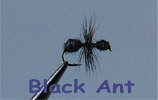 The Terrestrials The Terrestrials This very broad grouping of insects constitutes the second major food source for friend fish. They are creatures of the land by birth and habitat. Fortunately for friend fish, the terrestrials are not known for their intelligence. Consequently, they are most apt to fall into the water, either accidentally or on purpose. Whichever the case, the terrestrial becomes trapped in the surface film and, in turn, becomes a ripe and succulent morsel for any fish looking for a snack. No wonder the fish love to chow down on members of this group; just look at the list of who’s who in terrestrial insects: beetles, grasshoppers, spiders, crickets, ants, leafhoppers, wasps, moths, bees, and yes, even gnats and flies. (Many years ago I drove the Alaska Highway, fishing my way from the States back to Alaska where I was stationed. Unless you have experienced the misery of the black flies of the tundra, you haven’t been miserable. Having just knocked one silly, I was overjoyed when it fell close enough to the water to be snatched and eaten by a big grayling. That’s what I call justice! That silly fly tried to eat me alive.) I hasten to add the black gnat and the black ant remain two of my favorite flies, all but guaranteed to catch fish anywhere. 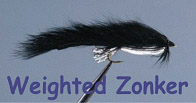 The Other Things. The Other Things. Lots of other things live in the water column such as crustaceans, leeches, eels and minnows. As you move up the food chain and into bigger and deeper waters, either fresh or salt, minnows and crustaceans take on great importance: crayfish, crabs, shrimp, and baitfish become the mainstay of the eatery. You and I would call these meals, “meat and potatoes.” Here, the flies of the fly fisher grow in size and the axiom “big fly for big fish” begins to become meaningful. Of course, there are a few other things that enter the water from time to time such as a snake, frog or mouse. Whenever one of these decides to take a swim, it is likely to become a target for a man-sized fish looking for a man-sized meal. 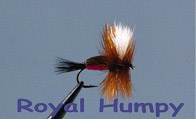 The Attractors. The Attractors. Our friend the finny fish does not necessarily strike just because he or she happens to be hungry. To the contrary, fish strike for two other reasons: curiosity and anger. I call flies that tempt this behavior the attractors, simply because they attract the fish’s attention. Admittedly, I have never been able to determine which of the two motives is governing at the exact moment of the strike; however, I am content in the knowledge it had to be one or the other because the fly sure as heck did not resemble anything in the water column. This technique - deceiving the fish into striking something alien - is especially good when chasing the large or smallmouth bass, and, of course, almost anything that swims in fresh or saltwater. The Categories. Given the foregoing discussion, it’s easy to follow the notion that flies can be classified into four broad categories: (1) Flies that float and remain on the surface;
(2) Flies that float, but dive when retrieved;
(3) Flies that submerge and swim beneath the surface of the water column,
(4) And, flies that sink deep, swimming near the bottom. (For purposes of this discussion, the classic trout fly - dry flies, wet flies, and nymphs - will not be the focus. Fly fishing, as a fishing concept has outgrown the trout. It took years, if not decades, for people to realize fly fishing is much bigger than trout, fly fishing is for almost any fish that swims in either fresh or saltwater – except, perhaps for Jaws, The Great White.) 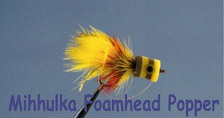 The Floaters. The Floaters. Fishing a floating fly, popping bug, or slider, as they are frequently called, has to be the way to go for pure fun. Because everything - the line, leader and fly - is on the surface, the strike can be the thrill of a lifetime, particularly if it is a trophy largemouth bass that qualifies for the Texas Parks and Wildlife’s “Share a Lunker” program. The floaters are usually made of hard plastic, a soft plastic foam or deer or elk hair. Because of the materials, those of plastic are natural floaters. The latter, those “hair bugs” so many fly fishers favor, must be dressed or waterproofed to float. The floaters are of two basic designs: the popper and the slider. The difference? During the retrieve, the fly fisher manipulates the fly so that a popping bug audibly “burps” when a bit of line is stripped in. 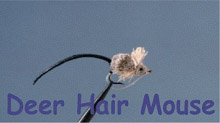 The slider, on the other hand, simply slips slides along sort of like the words in an old song. It leaves behind a small wake, just as would anything swimming on the surface. When the time is right on your water, the floaters are deadly. Those of plastic are usually adorned with eyes and feathers and come in a wide variety of colors. Black, by the way is especially good at night or periods of low light. The hair bugs are especially effective in patterns such as the mouse and frog. Some floaters have rubber legs to squiggle or dance even when the fly is at rest. In summary, no fly fisher worth his or her salt is ever without a sampling of the floaters. The slider, on the other hand, simply slips slides along sort of like the words in an old song. It leaves behind a small wake, just as would anything swimming on the surface. When the time is right on your water, the floaters are deadly. Those of plastic are usually adorned with eyes and feathers and come in a wide variety of colors. Black, by the way is especially good at night or periods of low light. The hair bugs are especially effective in patterns such as the mouse and frog. Some floaters have rubber legs to squiggle or dance even when the fly is at rest. In summary, no fly fisher worth his or her salt is ever without a sampling of the floaters. 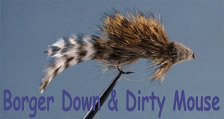 The Divers. The Divers.
The diver is not unfamiliar to those who have fished with spin or bait casting rigs. As the name implies, a diver “dives” from the surface when the fly fisher strips in a bit of line. When the retrieve is paused, the fly bounces back up to its original position. Just how far a diving fly dives is a product of several things: the fly’s construction, the leader, the line and, finally, the action imparted by the angler. Because of these variables, it is possible to use a diver almost anywhere within the water column making it one of the most versatile flies in the fly fisher’s inventory. In my view the Dahlberg Diver, a pattern named for its designer Larry Dahlberg, is the best of the best. It is a deer hair fly that produces extraordinary results in both salt and fresh water. 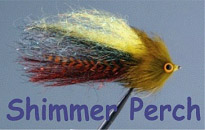 The Swimmers. The Swimmers.
If you had a fish-eyed view from within the water column, you would be the first to say the swimmers are appropriately named -- no question about it, the swimmers swim. And somewhat like its first cousin the diver, the swimmer can move about anywhere in the water column, depending as before on the leader, line and design of the fly. What kind of fly illustrates the category? While there are several, from my viewpoint it is the streamer fly. It really doesn’t matter whether the target is perch, trout, bass, salmon, redfish, weakfish, bluefish, mackerel, cobia, yahoo, tuna, tarpon or shark. The streamer fly can do it all when matched to the right rod and right line. You should become familiar with the size, color and action of the baitfish in the waters to be fished, to be truly successful with the streamer. I believe the streamer, more than any other fly, possesses the greatest number of possibilities in the act of creation -- it can be made large or small, colorful or drab, weighted or not weighted. A streamer can be designed to either replicate minnows or appear apart from the baitfish of the water column. The streamer, more than any other fly, can be tied to appeal to the fish’s hunger, anger, or curiosity -- it’s the tier’s choice. There is, of course, a wide range of patterns. By the way, those that do not imitate other minnows or baitfish are called “attractors.” 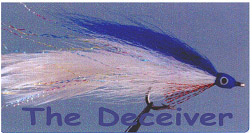 Of the lot, Lefty’s Deceiver is probably the most famous, with credit for the design going to Lefty Kreh, world famous master angler and fly tier. The deceiver is an attractor that swims. Colorful, the deceiver works anywhere provided it is tied in an appropriate size and properly fished. A good fly fisher will swim a streamer fly such as the deceiver much as they would a floater. Frankly, I do not know why the deceiver works so well. It just does! Remember this: the right size streamer, whether imitator or attractor, tied in the right color pattern will attract or seduce just about any fish available to the fly fisher -- fresh or saltwater. The streamer fly is appropriate for fishing anywhere in North America, north to south, east to west, salt to fresh water. That’s saying a lot. Of the lot, Lefty’s Deceiver is probably the most famous, with credit for the design going to Lefty Kreh, world famous master angler and fly tier. The deceiver is an attractor that swims. Colorful, the deceiver works anywhere provided it is tied in an appropriate size and properly fished. A good fly fisher will swim a streamer fly such as the deceiver much as they would a floater. Frankly, I do not know why the deceiver works so well. It just does! Remember this: the right size streamer, whether imitator or attractor, tied in the right color pattern will attract or seduce just about any fish available to the fly fisher -- fresh or saltwater. The streamer fly is appropriate for fishing anywhere in North America, north to south, east to west, salt to fresh water. That’s saying a lot. 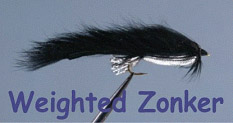 The Sinkers. The Sinkers.
These flies are usually specialty flies designed to sink and swim in the depths of the water column. Take a poll and I think you will find a vast number of fly fishers never fish these flies. Admittedly, the full sinking fly lines are more difficult to fish on the water than the others. Given but a moment’s thought and you will understand why. Once in the water the line submerges into the depths. A cast cannot be made until the submerged line is brought back to the surface. Consequently, the act of casting requires a multiple set of casting techniques involving: 1. Line recovery.
2. Roll casting.
3. And, transition into the standard backcast in one simple fluid motion. The fact remains that the sinking flies, such as the sculpin or leech, can be a devastating weapon in the fly fisher’s arsenal. A deep swimming sinker can entice a strike when nothing else will! The reason is simple: the deep swimmers sort of scrounge around in and about things like weeds, trash, brush and are therefore apt to stumble into friend fish. If you were the fish, you too, might become aggravated if something like an eelworm came snaking its way into your turf. Try a deep sinker during the dog days of summer when fish are deep. Learn to fish the sinking lines and be sure these flies are tied weedless. Of you enjoyed this article. I know you will appreciate Part 2. Read on! Steve May with Doug Macnair (ed.), The Wright Hatch, The Wright Rod Company, Websterville, Vermont, May, 1995.
Steve May with Doug Macnair (ed.), Vermont Caddisflies: The Wright Identification Guide, The Wright Rod Company, Websterville, Vermont, January, 1996.
|
